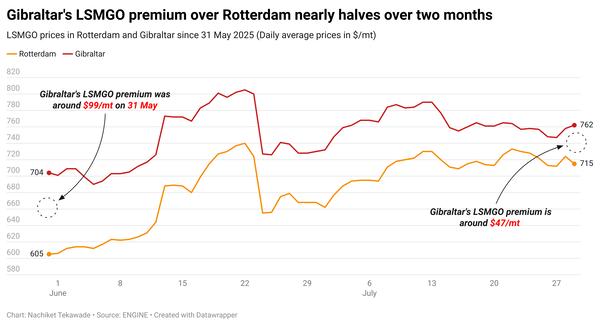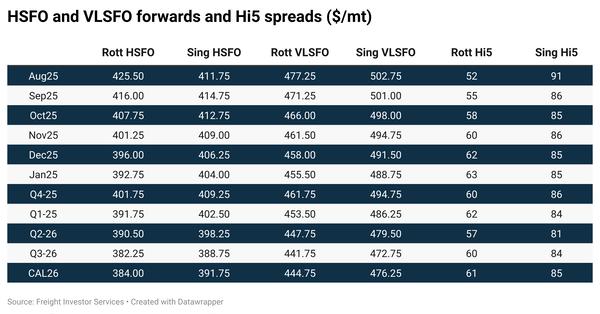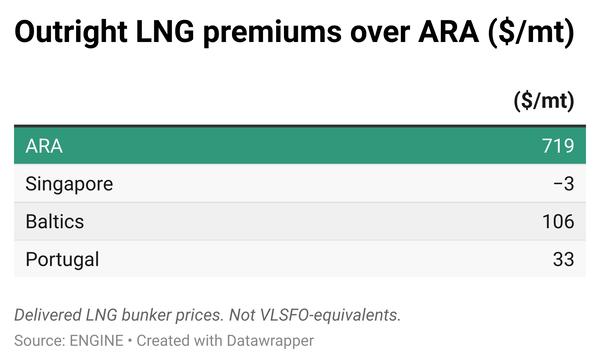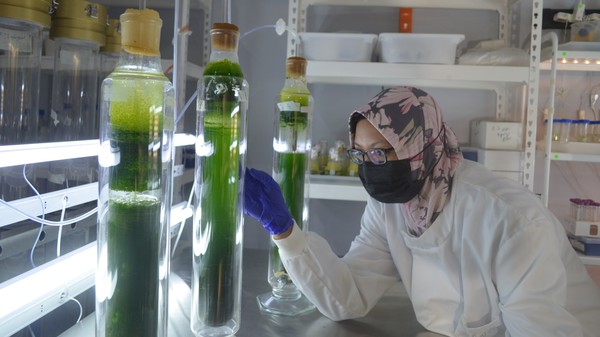HutanBio halves production costs and targets first commercial plant in 2026
Biofuel startup HutanBio will produce carbon-negative algae oil for bunkering across three initial production sites, and aims to break ground to build the first plant early next year.
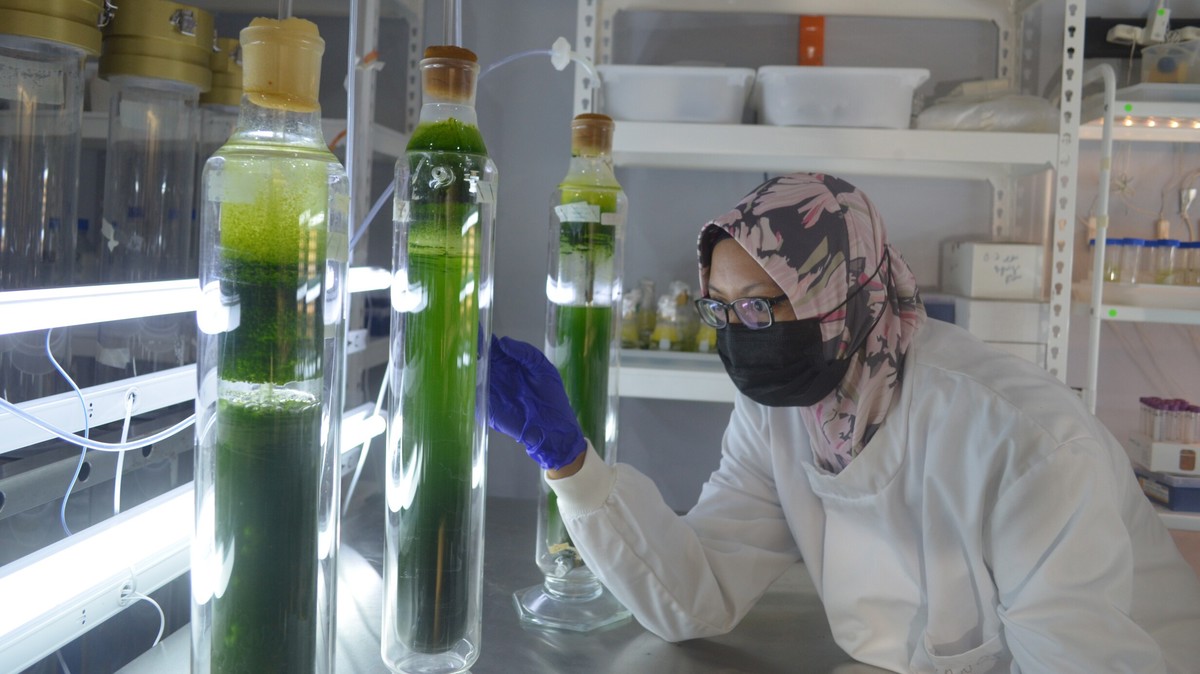 IMAGE: Co-founder Noor Azlin Mokhtar in a lab screening algae samples. HutanBio
IMAGE: Co-founder Noor Azlin Mokhtar in a lab screening algae samples. HutanBio
HutanBio has sifted through a trillion algae samples to find a family of highly efficient, robust and oil-producing species that had never been catalogued before.
“Fundamentally, we’re trying to solve the same problem that lots of people across the industry are, which is how do we decarbonise long-distance transport?” chief executive Paul Beastall has told ENGINE in an interview.
The company has developed a carbon-negative algae oil as a fuel that can be stored, pumped and combusted much like today’s gasoil, sparing shipowners the cost of new engines or cryogenic systems to run on alternative fuels like LNG, liquefied biomethane or e-fuels.
“Our core hypothesis is that it’s only really hydrocarbons that have the energy density and the ability to be stored and transported at standard atmospheric temperature and pressure, and that can effectively be retrofitted without needing to change equipment,” Beastall said.
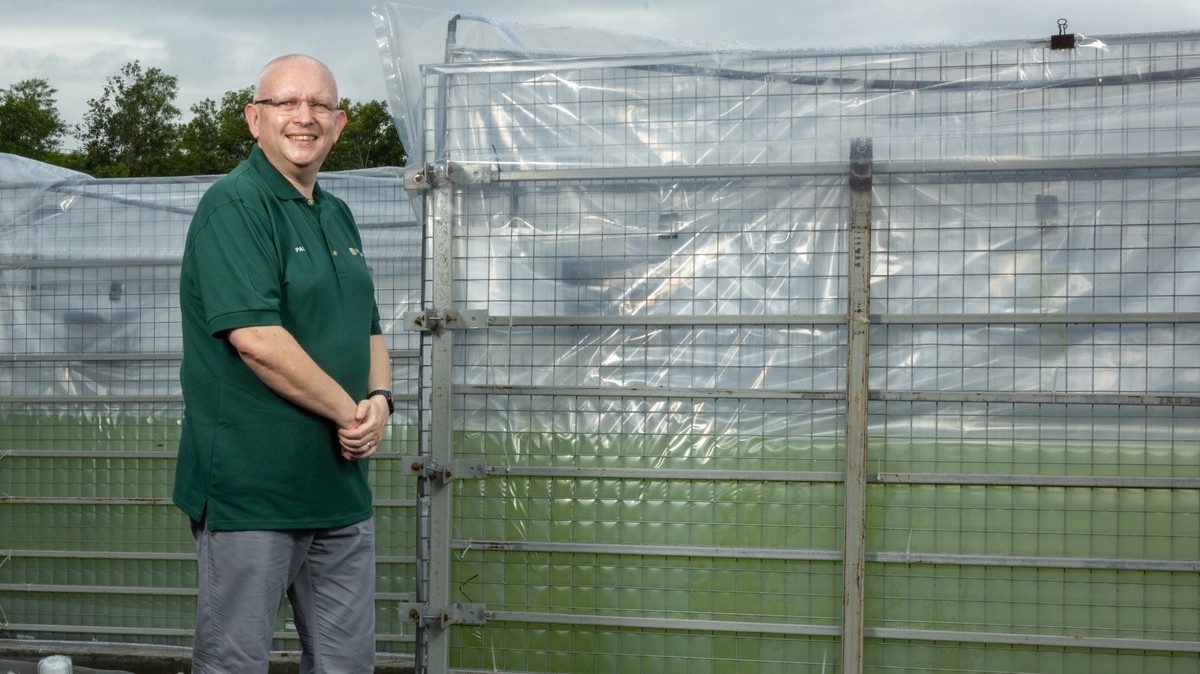 IMAGE: Chief executive Paul Beastall in front of first-generation photobioreactors filled with sea water and algae oil at a pilot site in Malaysia. The company is looking to scale to tonnes with its first commercial plant in either Morocco, Western Australia or the Middle East next year. HutanBio
IMAGE: Chief executive Paul Beastall in front of first-generation photobioreactors filled with sea water and algae oil at a pilot site in Malaysia. The company is looking to scale to tonnes with its first commercial plant in either Morocco, Western Australia or the Middle East next year. HutanBio
Scaling in deserts
The company is in the final stages of raising funding that will enable it to finalise the location of its first commercial desert algae farm and move from litre batches to tonne-scale output.
It has identified three locations to produce the algae oil: Morocco, the Middle East and Western Australia. What they all have in common is abundant sunlight and plentiful space to set up desert farms.
“As much as we can in the early days, it makes sense to try and sell it close to where it’s made. It helps the carbon case,” Beastall said.
Once a pilot farm is proven, more desert farms are expected to follow to add capacity in modular blocks. Beastall estimates that “massive oil farms” will be needed to theoretically serve the whole shipping fleet. But that is not the point, at least not yet, as HutanBio as a start-up needs to do things step by step.
A challenge with building algae farms in coastal desert land areas is that there are not many big ports in these areas. HutanBio has also been speaking to authorities and fuel suppliers in ports that are not close to deserts, like Rotterdam and Singapore.
While these ports are not near deserts, their port authorities have been eager to stay at the forefront of the energy transition by exploring various alternative fuels. Beastall calls them forward-thinking.
Carbon-negative
HutanBio has recently halved its production costs by redesigning photobioreactor bags at a pilot site in Malaysia. It grows the algae in enclosed photobioreactors using seawater, sunlight and captured carbon dioxide (CO2) on non-arable land. The algae is stimulated to produce triacylgylcerides, an energy-rich algae oil.
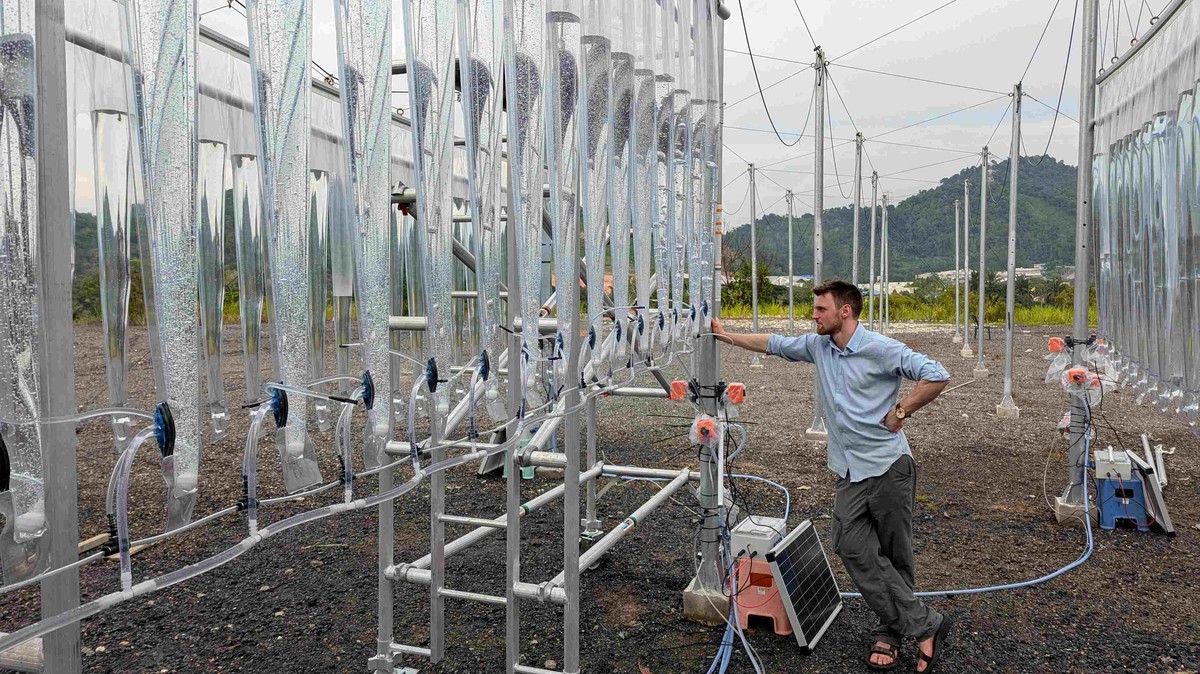 IMAGE: Project manager and mechanical engineer Matt Parkes testing the new photobioreactor bags at a pilot site in Malaysia. HutanBio
IMAGE: Project manager and mechanical engineer Matt Parkes testing the new photobioreactor bags at a pilot site in Malaysia. HutanBio
The microalgal biofuel is great at sequestering CO2. It has the potential to remove 5.78 mt of CO2-equivalent for every mt of biofuel that is produced. That’s possible because algae has a natural ability to capture and store CO2 when it grows, and because HutanBio uses renewable energy across its operations.
In a lifecycle assessment (LCA), the algae had net negative emissions across growth, transport and processing.
On a greenhouse gas (GHG) intensity basis – which is what matters towards FuelEU Maritime and the upcoming IMO Net Zero Framework – the algae oil can achieve a negative -20.96 grams of CO2-equivalent per megajoule of energy (gCO2e/MJ).
HutanBio says that no other feedstock comes close to this GHG intensity, and that its algae biofuel is the only feedstock on the market with a negative value.
"Many producers focus solely on the theoretical carbon benefits of their fuel while obscuring the significant emissions from their production processes. Our approach is to measure everything, optimise what we can, and be completely transparent about the results,” said HutanBio’s chief technology officer James Ibberson.
Casting the net wide
HutanBio is far from the first company to explore algae’s potential as a fuel. But others have not looked as far and wide for the right kind of algae.
“Everybody else who’s looked at algae biofuels has started with an off-the-shelf algae from a university library or from one of the national research institutes,” Beastall said.
HutanBio took another route, screening more than a trillion samples, stress-testing 140 species for heat, salinity, light and oil yield, and discarded lots of them to end up with high-density triglycerides. Roughly 80 of those were new to science, giving the team a proprietary starting point.
“We went out and sought the algae that fit the problem best…it’s down to the research and literally just looking all over the place for the right algae,” Beastall explained.
Others have been looking off the coast of the US or Western Europe because that’s where universities and research institutions are located. They’ve tried to engineer it to improve performance but not worked with the right kind of algae in the first place.
“We’re pretty confident we’ve got something special,” Beastall argued.
HutanBio has patented the evolved algae and its production technology. And as HutanBio claims to have cracked the algae challenge by finding a unique and high-performing strain with potential for scale, will others try to replicate it?
“They can try. … Will somebody go and copy it? Possibly. Can they find it? Probably not, unless they steal it from us,” Beastall said.
Confidence-building
There is also generally a lack of knowledge about algae as a fuel. Not many people understand it, which makes scaling it trickier, Beastall argued.
First up is building confidence in the market by testing against marine fuel standards, before engine testing in labs and eventually at sea.
Uniform chemistry should simplify ISO 8217 marine fuel testing and ship engine trials. HutanBio’s algae oil is uniform because it’s made from a biological process, and has C16-C18 hydrocarbon chain lengths. This is a narrower range than you get for fuel oil.
“What comes out is not like a barrel of crude oil where there’s all different chain lengths of hydrocarbons,” Beastall explained.
The algae is 2 billion years old. The company’s scientific founder John Archer has a hypothesis that crude oil extracted from places like the Middle East today is made from relatives of the algae used by HutanBio.
“We’re kind of already there,” Beastall said, noting that the algae “is an ancient microorganism” with about 98% of MGO's energy density, so ships would see little or no loss of range.
The algae oil has an energy density that’s about 5% greater than fatty acid methyl ester (FAME) – the most commonly produced biofuel type for bunkering.
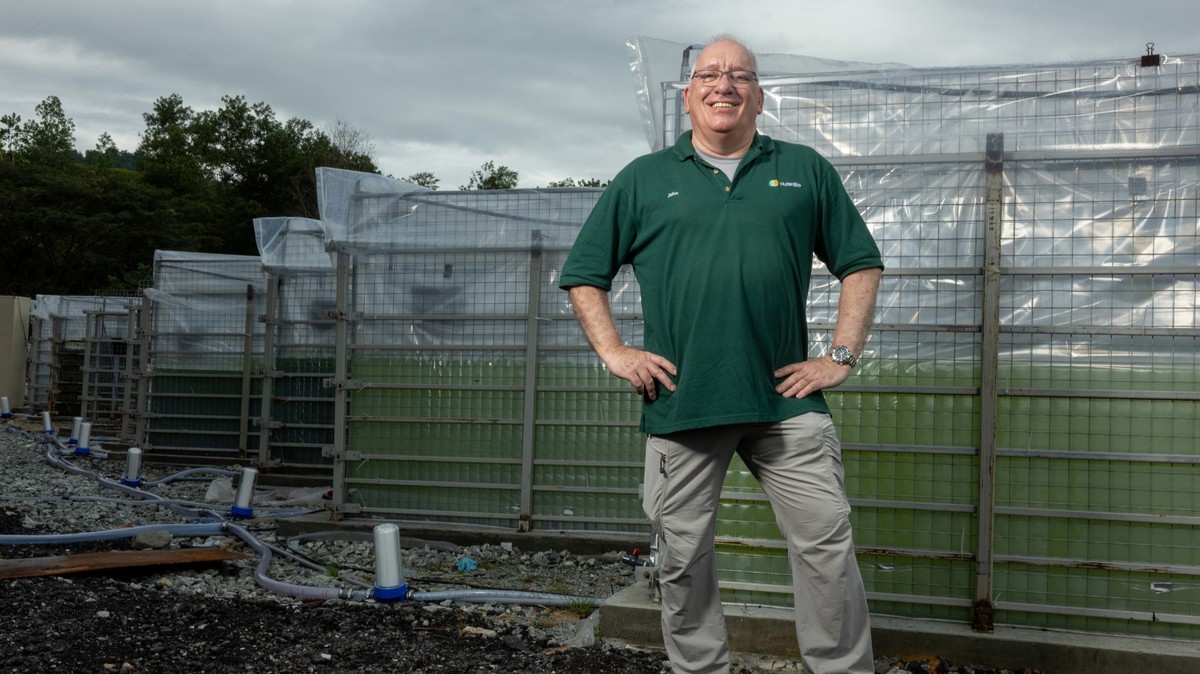 IMAGE: HutanBio’s scientific founder John Archer has a theory that the microalgae they have identified and patented is a relative of Middle Eastern crude oil. HutanBio
IMAGE: HutanBio’s scientific founder John Archer has a theory that the microalgae they have identified and patented is a relative of Middle Eastern crude oil. HutanBio
Ships and planes
HutanBio will market the algae oil in two main streams. One is a finished bunker fuel that can be blended directly with VLSFO or MGO. The other is a feedstock for sustainable aviation fuel (SAF) production in refineries.
Selling bunkers first keeps the supply chain shorter. Beastall said that by selling it as a marine fuel, the company has “direct access to the market and that is a huge advantage for us to maintain our independence and flexibility.”
Pricing will be in the range of more established FAME-type marine biofuels, and the aim is “hundreds of dollars per tonne, not thousands."
SAF refiners will inevitably take a processing margin, but how large that will be is still unclear, Beastall noted. And they control the jet fuel delivery networks, leaving HutanBio with less pricing power than in the marine market.
Supply squeeze
Tighter IMO targets for ship emissions, and EU emission targets for all sectors, are set to eventually squeeze waste- and residue-based biofuel supply.
There are structural limits on how much used cooking oil (UCO) or palm oil mill effluent (POME) the world can produce into sustainable biofuels. This has prompted some producers and suppliers to experiment with alternative biofuel feedstocks such as cashew nut shell liquid (CNSL), which carry stability risks at higher blend percentages.
Beastall thinks the marine biofuel market could get tight as emission reduction targets increase. There could be a shortage, and prices could rise. If there is not enough to go around, that is a good position for HutanBio to be in, he said.
When asked how much of its volume will go to shipping versus aviation, Beastall said HutanBio will leave that up to the market and regulations to decide.
He expects a mixed-fuel future where multiple technologies compete, but believes algae oil offers one of the fastest transition tracks.
For now, the company is concentrating on scaling gradually and winning customer trust before worrying about total market share.
“People ask me often, who are your competitors? And I’m going to say I hope everybody’s successful because we’re facing a climate emergency and actually we need lots of solutions.”
By Erik Hoffmann
Please get in touch with comments or additional info to news@engine.online

Contact our Experts
With 50+ traders in 12 offices around the world, our team is available 24/7 to support you in your energy procurement needs.

